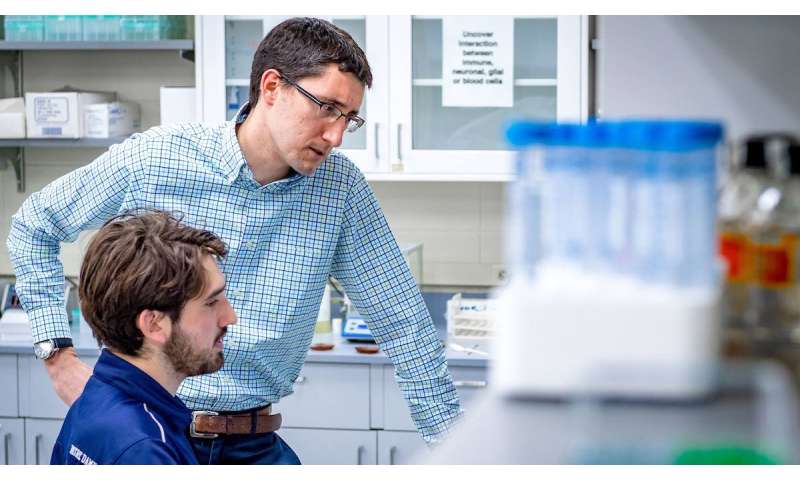Paxil vs cymbalta

On average, an estimated three out of every 1,000 newborns will suffer a brachial plexus injury during birth, damaging the bundle of nerves that connect the brain and spinal cord to the shoulders, arms and hands. In the most traumatic cases, even with surgery and physical therapy as an infant, there is no treatment that can guarantee a full recovery.
However, a new study from the University of Notre Dame has identified a strategy that may support the regeneration of nerves affected by a brachial plexus injury. The findings show that there could be a new path forward for a full behavioral recovery.
“Early on, our model showed that the nerve regeneration process after a brachial plexus injury differed from how these nerves connect the peripheral and central nervous systems during early development,” said Cody Smith, the Elizabeth and Michael Gallagher Assistant Professor of Biological Sciences and co-author of the study. “My lab worked to recreate that development-like process by using a chemotherapy treatment, paclitaxel, which helped stabilize axon invasion for spinal cord re-entry.”
During early development, nerves known as dorsal root ganglia (DRG) sensory axons enter the spinal cord to then connect with specific neurons, which provide motor and sensory function for hands, arms and shoulders. However, after a brachial plexus injury, these DRG sensory axons are unable to penetrate the spinal cord barrier when attempting to regenerate. For the study, which was published in Cell Reports, the Notre Dame researchers aimed to identify a process that would allow severed DRG sensory axons to enter the spinal cord when regenerating after an injury within their model.
Once the DRG sensory axons penetrated the spinal cord, the researchers were able to establish connection between the nerves and with neuronal “partners,” allowing for full functional recovery in the model after 48 hours. Although the study was intended to mimic regeneration after obstetrical brachial plexus injuries, there is potential for it to benefit those who suffer a brachial plexus injury later in life as a result of an accident or other trauma.
Source: Read Full Article
